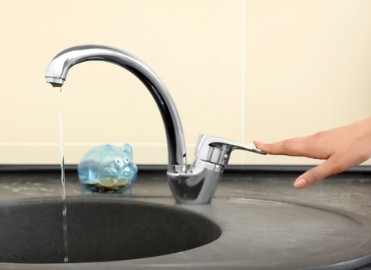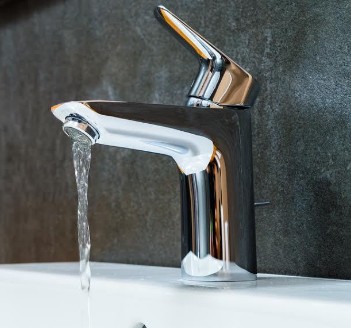The purpose of a faucet is to control water flow, ensuring water comes out when you turn it on and stops flowing when you turn it off. Considering their importance, you must keep them working exceptionally, so why is your faucet turned off but water still running, and what to do with it?
Your faucet is turned off, but the water is still running because the O-ring is broken, the cartridge is broken, or the valve seat is rusted. Alternatively, you may be dealing with a broken washer.
The upside is you can fix this issue yourself, but you’ll need to gather some tools and replacement parts. Below is a walk-through of how to fix each cause.

Faucet Turned Off But Water Still Running (4 Reasons Discussed & Fixed!)
| Cause | Recommended Fixes | |
| 1. | Damaged Cartridge | Replace the cartridge |
| 2. | Broken O-ring | Install a new O-ring |
| 3. | Rusted valve seat | Remove rust using vinegar and a brush |
| 4. | Broken washer | Install a new washer |
1. Damaged Cartridge
This component turns the water off and on and controls how much water flows out of the faucet. Therefore, if it gets damaged, the faucet stops working correctly and lets water flow continuously.
- Stop water from flowing into your faucet by closing the shut-off valve.
- Unscrew the handle, then remove it.
- If the cartridge is held by any clips, remove them.
- Note the faucet cartridge’s orientation to the notches because you will install the new cartridge using the same orientation.
- Pull out the damaged cartridge. If it’s jammed, dislodge it with pliers but protect it with a rag or tape.
- Lubricate the new cartridge with plumber’s grease, then put it inside the faucet, ensuring it is aligned using the right orientation.
- Reassemble your faucet.
NOTE: when buying a replacement cartridge, ensure you get one that is compatible with your faucet.
2. Broken O-Ring
The O-rings in your faucet keep water from leaking around the base of the spout, so if it wears out or breaks, the faucet will malfunction. The first sign of worn-out O-rings is water drips at the spout’s base whenever you turn the water on.
Fix
Stop water from running even after turning off the faucet and other O-rings-related problems by replacing the faulty O-rings. Ensure the water flow is temporarily stopped.
Here’s how to do so:
- Remove the decorative cap using a screwdriver.
- Unscrew the retaining screws keeping the faucet handle in place, then remove the handle.
- Loosen the faucet’s stem and packing nut.
- Grip the valve’s base using pliers or a wrench, then loosen it by rotating it counterclockwise. If it appears stuck, dislodge the O-rings and the valve by pulling up on the valve’s base.
- Separate the worn-out O-rings from the valve’s body.
- Slip the replacement O-rings into the valve’s body.
- Reinsert the valve into the body of the faucet. Make sure everything is aligned correctly, then tighten the faucet valve with pliers or an adjustable wrench.
- Put the faucet handle back, ensuring it sits appropriately over the stem.
- Drop the screw into the handle’s center, then use a Phillips screwdriver to tighten it.
- Put back the decorative cap.

3. Rusted Valve Seat
As you examine the condition of your faucet, don’t forget to check the valve seat located at its base. A damaged valve seat will likely result in water dripping around the faucet handle, whether off or on.
The minerals in the water will accumulate on the valve seat as you continue using the faucet resulting in rusting over time.
Fix
- Clean the valve seat three times a year with vinegar or have a professional plumber do it.
- If the valve seat is irreparably damaged, install a new faucet or replace only the seat. FORIOUS kitchen faucet (View on Amazon) is an excellent choice for your kitchen sink since it is durable, flexible, beautiful, and operates smoothly.
- You will need a seat wrench to remove the damaged seat valve. Insert this tool into the valve seat, then spin it counterclockwise, then replace it with a new one (it must be the exact duplicate of the damaged one).
- Alternatively, even out your faulty valve seat using a dresser or valve seat grinder, which is inexpensive. However, this tool isn’t meant to be used with excessive force or for too long because the seat constitutes a soft metal, so you can easily grind away too much of it.
- Take out the stem, then insert the dresser into the faucet body until it reaches the valve seat. Turn the dresser clockwise a couple of times with moderate pressure. After that, remove the metal shavings from the valve seat using a clean cloth.

4. Broken washer
The rubber washer in a faucet creates a watertight seal, thus keeping your tap from leaking. However, its seal deteriorates over time as the washer undergoes wear and tear, leading to water drips.
Also, if the washer is installed wrongly, the faucet can leak, so it’s imperative that the installation is done by someone with the know-how.
Fix
Replacing faucet washers is a straightforward task that doesn’t take much time. The job entails disassembling the faucet, so begin by removing the cap, then loosening the screw and removing the handle. After that, do the following:
- Get the packing nut with a wrench and another to loosen the faucet stem.
- Remove the broken washer. It is at the stem’s bottom.
- Apply plumber’s grease to the replacement washer, then install it.
- Reassemble your faucet.
Note
You can avoid problems with your faucet in the future by ensuring your home’s water pressure is right. This is vital because excess pressure can damage plumbing components, including faucets leading to leaking.
You may easily overlook the problem when you realize your faucet drips or leaks, even when turned off, because it may seem like a minor issue. However, it can cause significant problems in the future if ignored.
Moreover, the sound of a dripping faucet is annoying, especially at night.
Summary on Faucet Turned Off But Water Still Running
Although replacing the entire faucet eliminates the need to troubleshoot the issue, however, replacing the faulty component is more economical. If your faucet continues running after you turn it off, explore the causes discussed above and use recommended solutions to fix them.
Other Related Posts:
